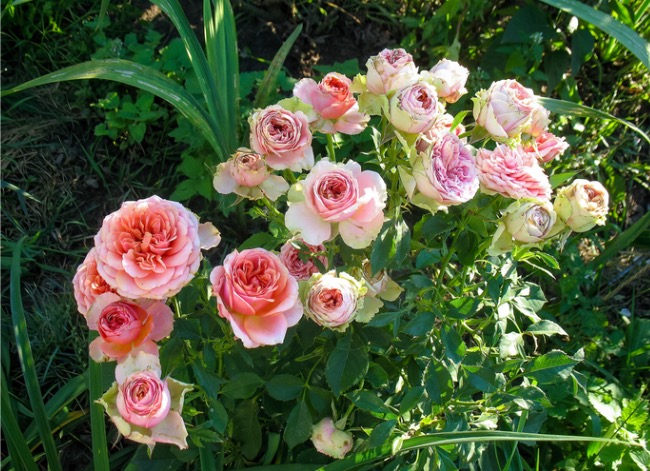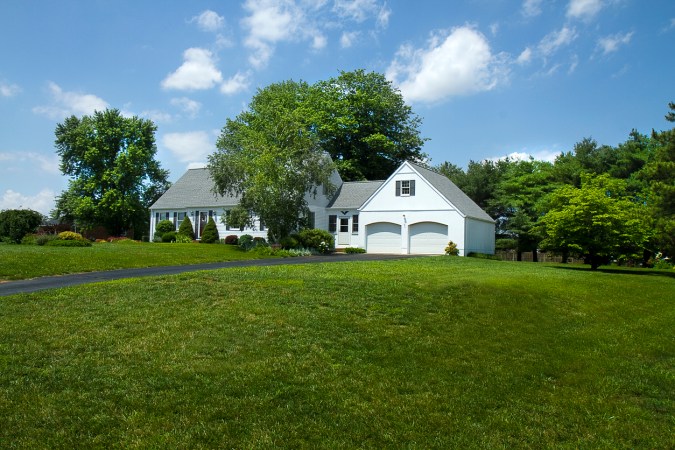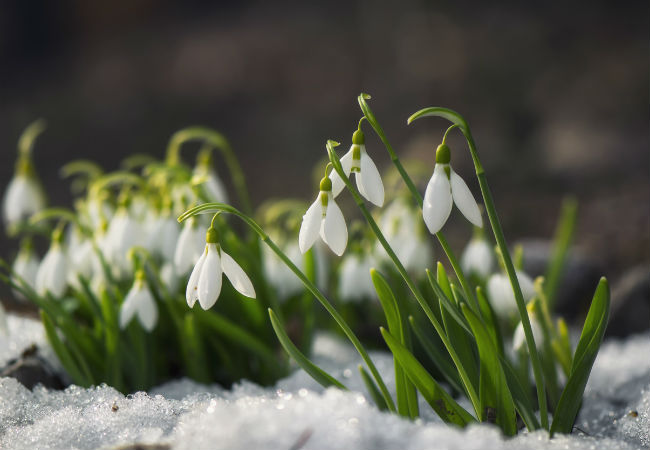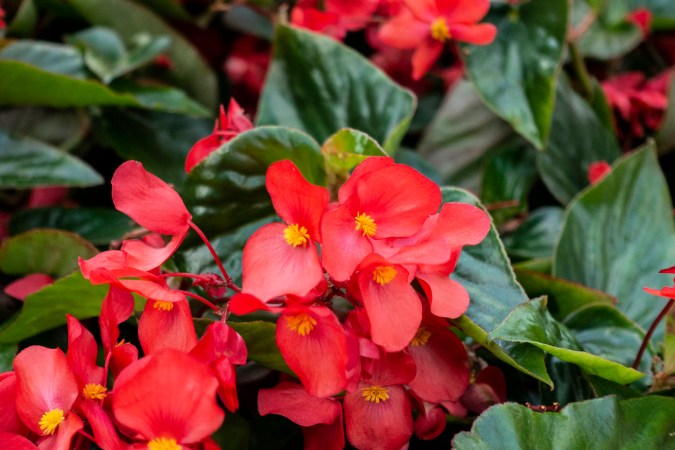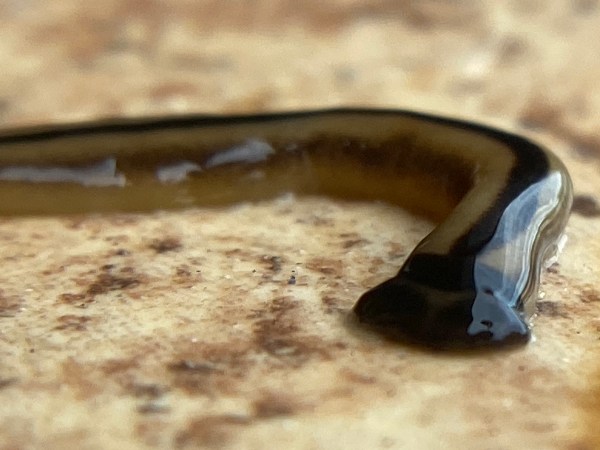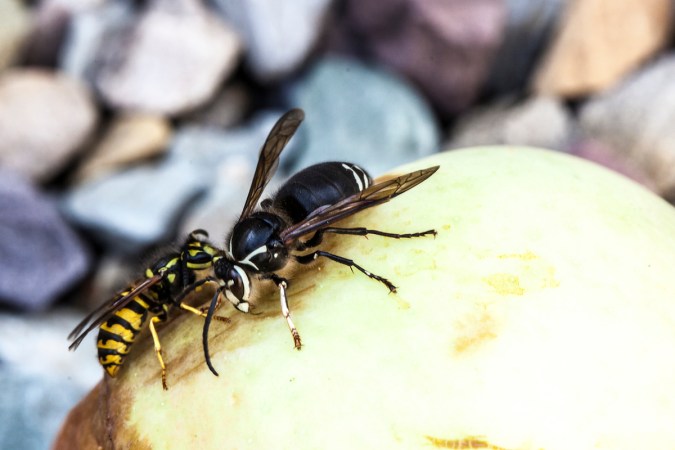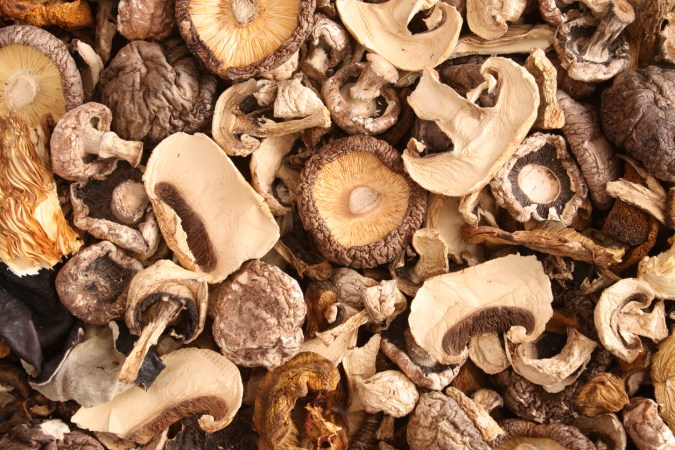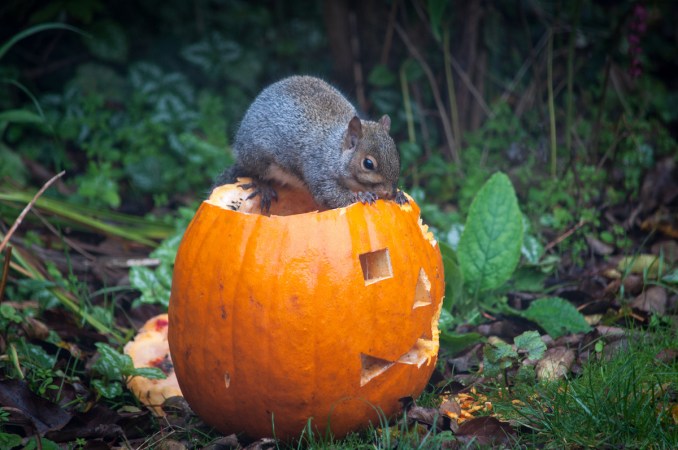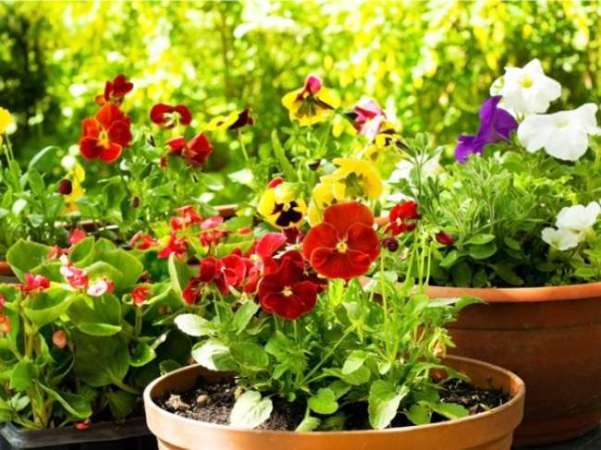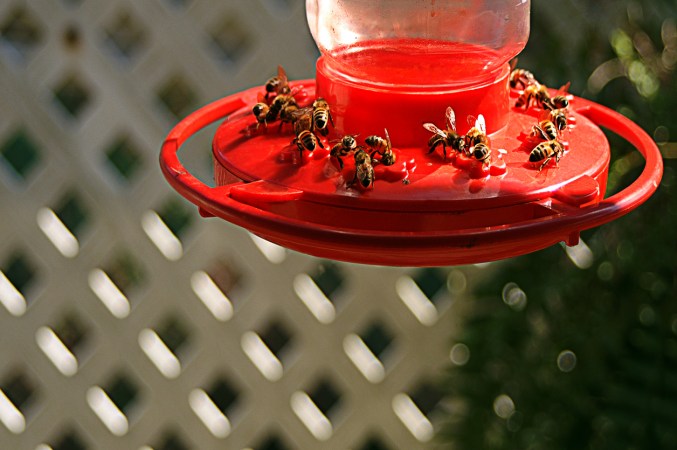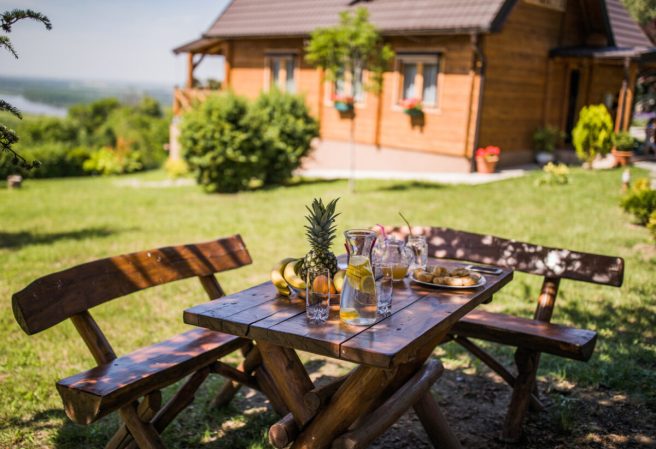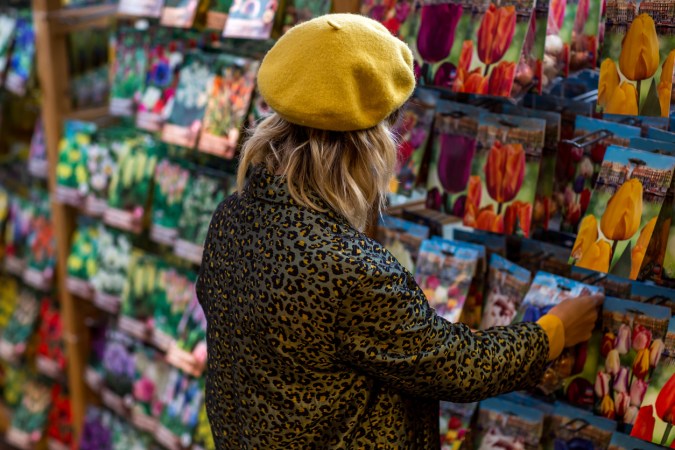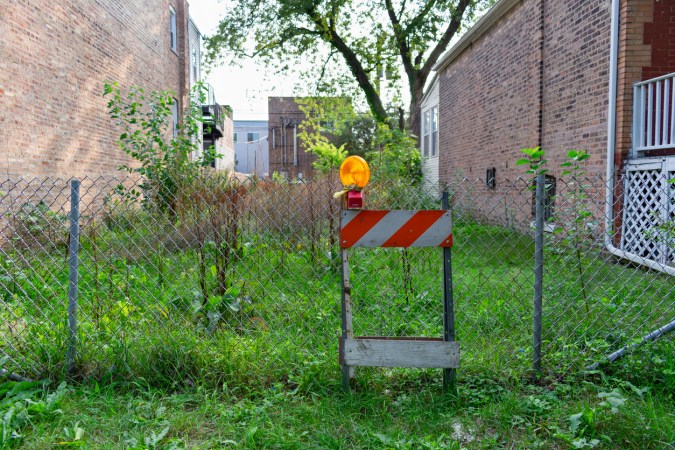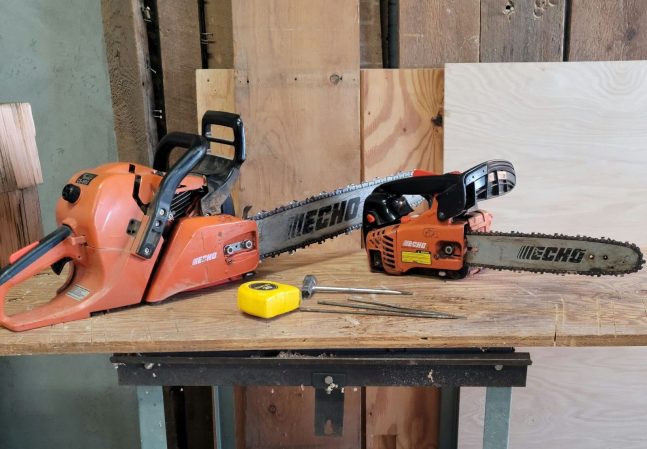We may earn revenue from the products available on this page and participate in affiliate programs. Learn More ›
Throughout history, flowers have been pretty much universally cherished. There are so many reasons to love flowers. They trigger chemicals in the brain: specifically, dopamine, oxytocin, and serotonin. These chemicals are associated with happiness, love, and good feelings. Studies indicate that flowers have an immediate impact on happiness and life satisfaction, with long-term positive effects on mood.
Old-fashioned flowers that many of us first encountered in our grandmothers’ gardens carry the additional benefit of triggering warm memories. Fortunately, these durable, reliable “oldies” look right at home in a modern garden. In fact, they can soften the rigid lines of today’s urban architecture and hardscaping, providing a more welcoming appearance—and fragrance—for homes everywhere.
Sweet Pea
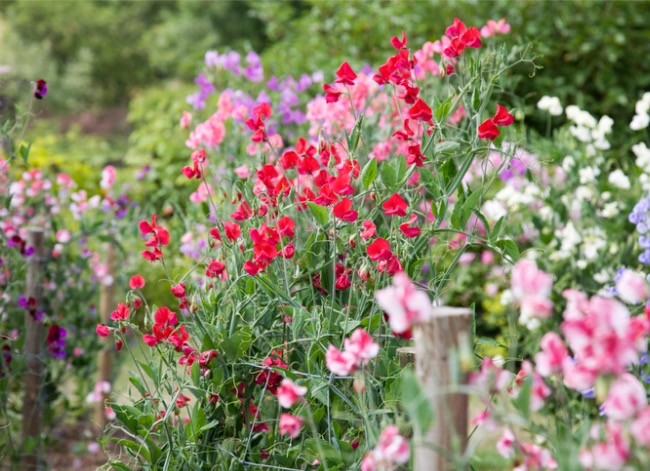
This annual climber is easy to grow from seed and produces a bouquet of delicate, fragrant flowers in vivid hues of pinks, purples, lavenders, and white. There’s enough for a cutting garden without diminishing the floral effect outdoors; in fact, the more you pick, the more flowers you’ll get. A staple in British and American gardens for more than two centuries, this Italian native was a revered member of Victorian gardens and is known as the April birth flower. The beloved sweet pea might be most cherished for its powerful but sweet scent.
Peony
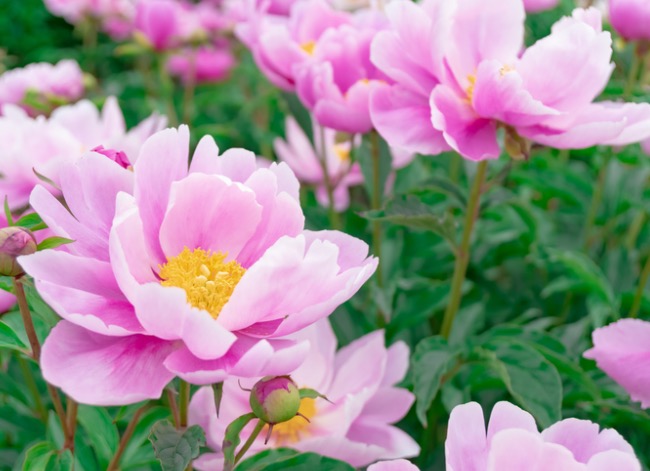
Another flower your grandmother was sure to grow is the peony. This sun-loving long-lived perennial requires little care in Zones 2 to 8. In late spring, it produces an abundance of large, full flowers—traditionally in red, pink, or white—on a bushy form. Peony stalks might benefit from staking to prevent them from flattening in the rain. The strongly perfumed blooms don’t last a long time, but grow multiple buds on each stem. They especially enhance a romantic cottage garden.
Rose
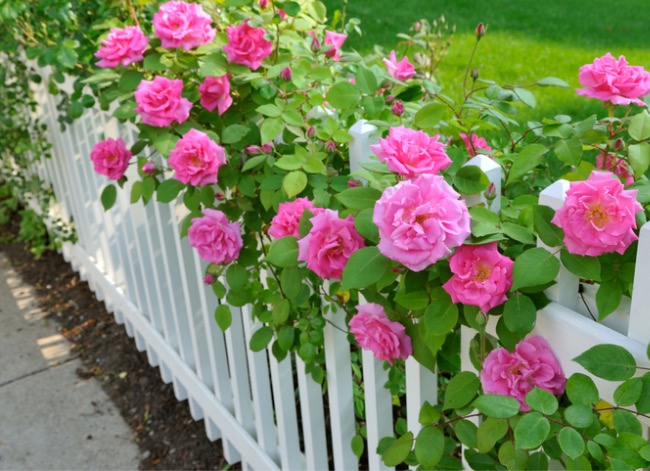
There are more than 100 species of rose—in almost every color, shape, size, and style, and with different types of fragrance. These woody perennials may be shrub-like, climbing, or trailing. What they all have in common is beautiful flowers that are worth battling the thorns and common pests they’re prone to suffer. Once associated with the Greek goddess Aphrodite, today roses symbolize love. Whether used as a border, on a trellis, or as a feature plant, the rose is a must-have for any self-respecting gardener.
RELATED: The 8 Best Climbing Roses for Your Garden Trellis, Arbor, or Pergola
Hollyhock
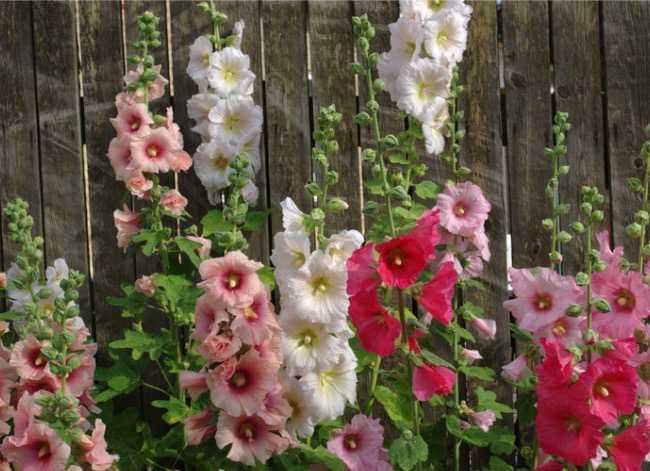
Grown in America since colonial times, the hollyhock is a tall, columnar, self-seeding biennial that blooms in mid-summer until autumn. Planted in partial shade or full sun, they produce large, single or double cup-shaped flowers in pinks, reds, purples, and white that attract pollinators. The bee attractors are a perfect companion to a vegetable garden. Their height has led to their use as a screen of unsightly scenes or as a backdrop for a swathe of shorter blooming plants.
Larkspur
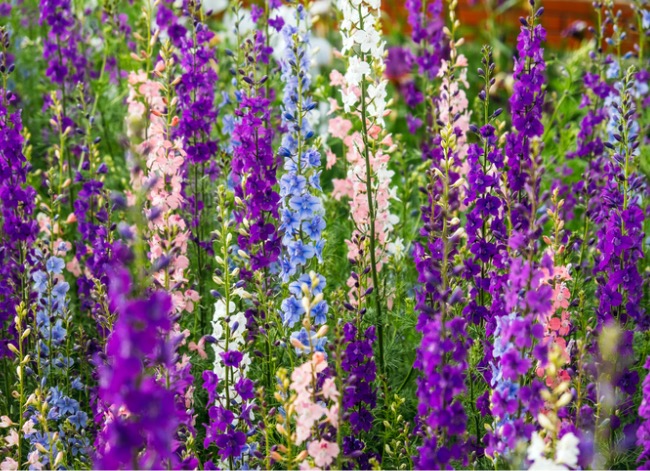
Another tall, spiky flower, the larkspur is an annual that can be tricky to germinate, given its requirement for a cold period (although they do self-seed). Sometimes referred to as an annual delphinium, larkspur usually flowers in paler shades of lavender, pink, and white than its cousin, and towers above it, reaching heights of 5 feet. This spring bloomer makes an excellent border or backdrop and does well in cutting gardens. A warning: the seeds are poisonous.
RELATED: The Best Places to Buy Flowers in 2021
Daylily
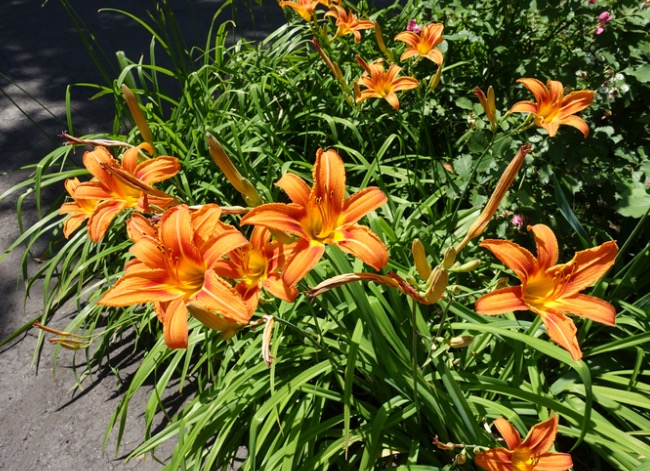
Daylilies are a strap-leafed perennial that are heat tolerant and extremely versatile. Easy to care for, they prefer full or partial sun and tolerate a range of soils. Cross-breeding has expanded their color palette from basic yellow and orange to include bronzes, pinks, purples, white, and even greens. There are more than 80,000 varieties with different sizes and shapes, such as spider, ruffled, triangular, recurved, and double. Some are fragrant. While a few rebloom, most bloom profusely from early to late summer, each flower lasting but a day—thus, the name.
RELATED: 14 Inventive Ideas for a Perfect Porch
Poppy
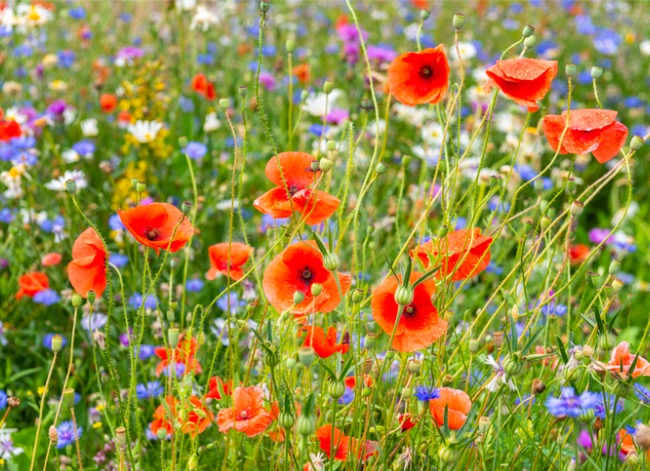
Ornamental poppies are most known for their bold scarlet crepey petals, contrasted by black centers, but they’re available in other colors, such as yellow, white, pink, lavender, and even blue. Poppies can be short with small blooms or reach 20 feet tall. Many are sown from seed, but some come back each spring from the roots. Predominantly spring bloomers, they can wilt under a hot summer’s sun. With 800 species of poppies, there’s sure to be one that suits your garden, whether it’s a cottage garden or a dinosaur-themed garden (early forms of poppies grew during dinosaur days).
Delphinium
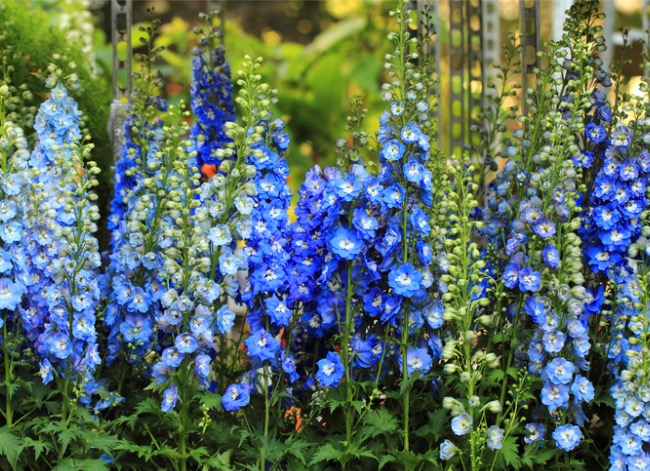
Like its taller cousin, the larkspur, delphinium produces spikes of blue to lavender blooms (although rare, there are white and pink varieties). Prized both for the rare blue color in garden flowers and for its fern-like foliage, delphinium is a showstopper in northern gardens. Sadly, this perennial wilts and sometimes dies in heat; it doesn’t thrive in Zones 7 and above. Well-draining soil is a must. Full sun will bring out the best in these bloomers.
RELATED: 11 Florals That Will Give Your Garden an English Cottage Feel
Iris
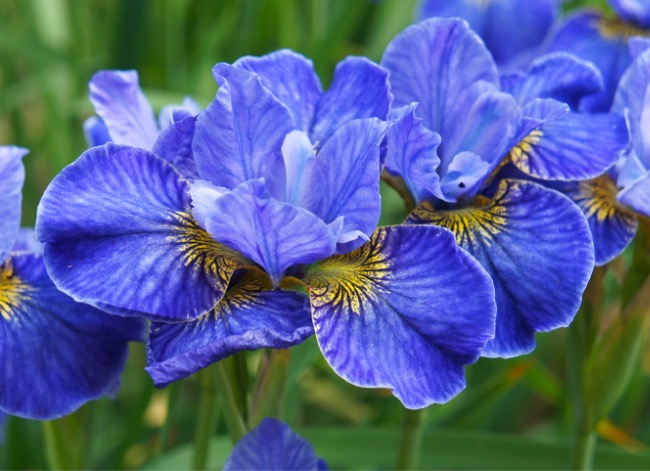
Grown from rhizomes, this majestic spring bloomer became a favorite in cottage gardens, although it is actually one of the oldest known plants in cultivation, with its image found on Minoan walls dating to 2,000 B.C. Through the years it has been used for medicinal purposes, perfume, dyes, and brewing. Its swordlike leaves were used to thatch roofs and cane chairs. But it is mostly loved for its large blooms in lavender, yellow, bronze, and white. Although bearded iris are popular, other hybrids such as Siberian, Japanese, and Louisiana are also common.
Foxglove
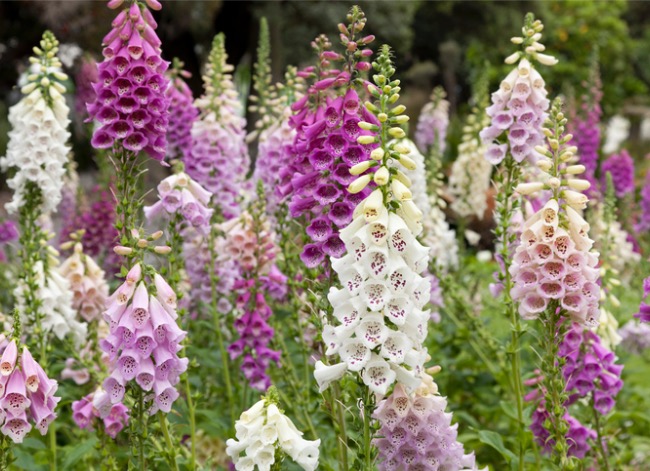
Native to England, foxglove—or digitalis—had a medicinal purpose in treating heart problems. Stalks on the stately plant can reach 6 feet and flower in shades of white, lavender, yellow, pink, red, and purple. If given full sun to partial shade and rich, moist soil, this short-lived perennial or biennial will reward a gardener with bell-shaped flowers that bloom in June. Hummingbirds love this flower, but deer and rabbits avoid it—and your pets should too, because it’s toxic when consumed.
RELATED: 10 Pretty Plants You Didn’t Know Were Poisonous
Cosmos
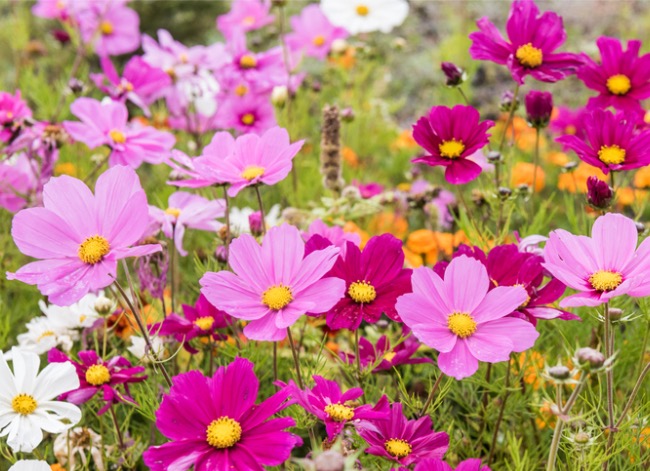
This medium-height (1- to 4-foot) annual features simple, daisy-like flowers in lavender, pink, and white atop lacy fern-like foliage. Easily grown from seed, cosmos can handle heat and poor soil, and they often self-seed, making a gardener’s job easy. They’re a great cut flower and make a superb filler for vases, but watching a mass of cosmos sway in the summer breeze is breathtaking, so leave some in the garden. Of the 20 varieties of cosmos, one comes in yellows and oranges on a shorter stem, and there’s even a chocolate cosmos!
Wisteria
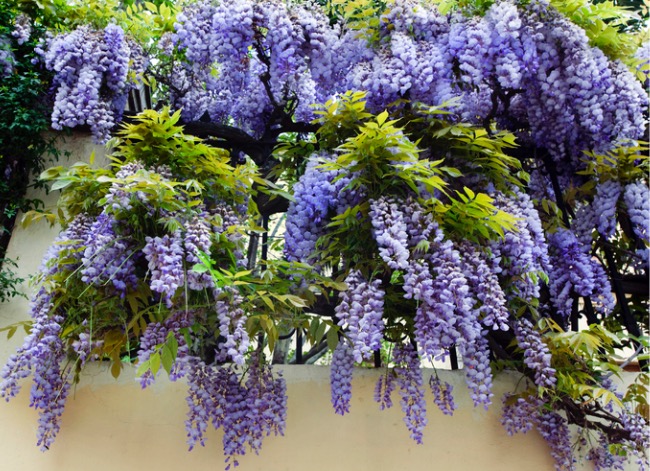
Wisteria is a woody vining plant that originally hails from China and Japan. Its grape cluster-like lavender blooms in late spring inspire heady images of Victorian romances. The twisty vine needs full sun, but almost more importantly, a sturdy support. Mature vines grow thick and heavy, and can collapse lightweight structures. This drought-tolerant beauty can be trained on pergolas and trellises for stunning effects of dripping with flowers. Beware that wisteria is aggressive, so heavy pruning will be needed.
Hydrangea
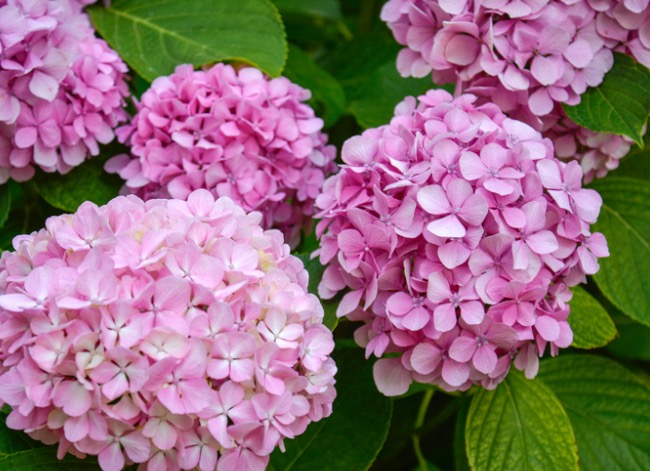
Hydrangeas are the lush, full, romantic backdrop shrub of the English cottage garden. Whichever one of the 600 named cultivars you choose, you’re sure to enjoy the gigantic, showy blooms on this luscious bush. Depending on the variety and on your soil’s pH, you could see flowers that are pink, blue, purple, or white. Commonly prized for the big bulbous heads of tiny flowers, hydrangeas like a sheltered spot with morning sun, safe from the afternoon heat. Once established, they’re pretty low-maintenance, although they require routine trimming.
RELATED: These 10 Flowering Plants Boast the Biggest Blooms
Hyssop
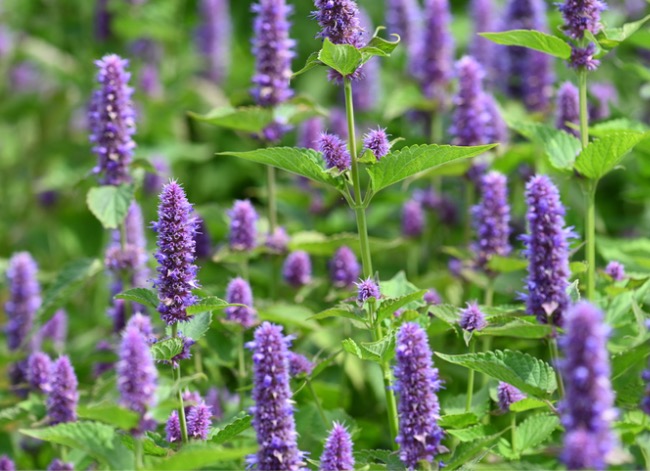
Attract hummingbirds and butterflies to your garden with this short-lived but self-seeding perennial. Used to treat many ailments in years gone by, hyssop is technically an aromatic herb with a sweet fragrance and a taste rather like a combination of sweet anise, licorice, and mint. Lavender spikes shoot up from the busy plant that grows to 2 to 4 feet tall. It prefers full sun but will tolerate partial shade. Once established, it requires little care.
RELATED: 14 Adirondack Chair Plans You Can Download and DIY This Weekend

